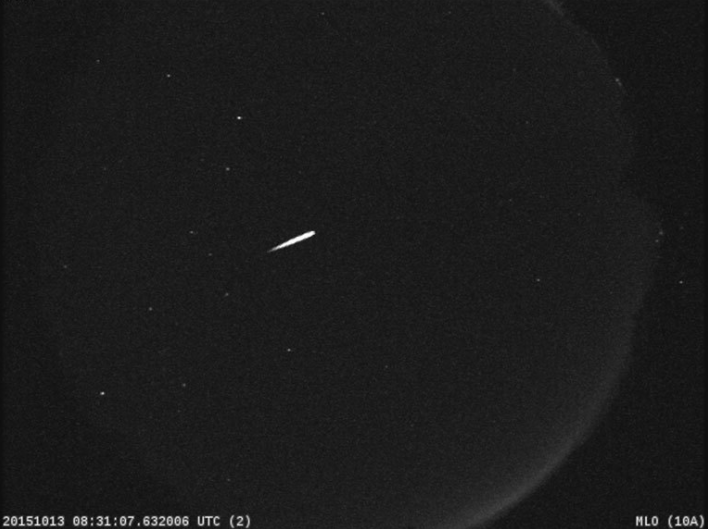The planet Earth would be revolving again to the remains and debris of the famed Comet Halley that was destroyed on 1986, now showing us a series of beautiful show from the skies that would even bring 25 shooting stars per hour during the Orionid Meteor Shower. Catch the luminous night show on Wednesday night, October 21, to see the remains of the dead comet and its left behind legacy.

The Orionids Meteor Shower started its display of "star" show in night time last October 2 when the planet finally arrived at the location of Comet Halley's space debris. However, the show is yet to unfold and astound the people of the beautiful light display.
The alluring meteor show began on October 2 and will last until November 7 for both the Northern and Southern Hemisphere to see. The peak of the Orionids Meteor Shower would be on October 21, Wednesday night, until early morning Thursday, October 22.
Read Also : Venus' 'Biological Method' Proves Same to Earth, Confirms Neil DeGrasse Tyson's StarTalk!
Orionids Meteor Shower 2020: How and When to Watch the 25 Shooting Stars?

According to the National Aeronautics and Space Administration (NASA), the planet is now in the proximity of Comet Halley's resting place and scattered remains in the celestial heavens. This time of the year, the public would catch one of the most beautiful and sure meteor shower shows from outer space.
The space agency advises people to go far away from city and street lights, to an open space to fully enjoy the show and see the Orionids with one's own eyes. NASA adds that people should be in an open area, maybe a field or long stretch of a highway stop to witness the meteor shower.
Orionids Meteor Shower would begin displaying its 25 shooting stars per hour on the dark, night sky by October 21, particularly, the hours close and leading up to midnight, transitioning to the early morning of October 22. NASA advises the public to just lay flat on the ground and look up to the dark skies.
October 21 to October 22 are important dates and time for the Orionids because this is the peak that would show the "25 shooting stars per hour" feat of Comet Halley's remains. NASA advises pointing one's feet to the south-east if located in the Northern Hemisphere or northeast if from the Southern.
What Makes Orionids Meteor Shower and Comet Halley Special?
The Orionids Meteor Shower and Comet Halley are two of NASA's favorite cosmic beings that graze the night sky during the Halloween period. Both are special to NASA and astronomers because they are recurring in the Earth and are from one of the most recognizable constellations in the world, the Orion.
Both cosmic beings are also close to the famous dying and overworked star, Betelgeuse, that will soon see its supernova and grand farewell. The meteors' velocity is at 41 miles per second which is equivalent to 147,600 miles per hour. The meteor shower would have been unseen if not for the trail of gas it leaves, glowing in the skies for a few seconds.
This article is owned by Tech Times
Written by Isaiah Alonzo
ⓒ 2025 TECHTIMES.com All rights reserved. Do not reproduce without permission.




